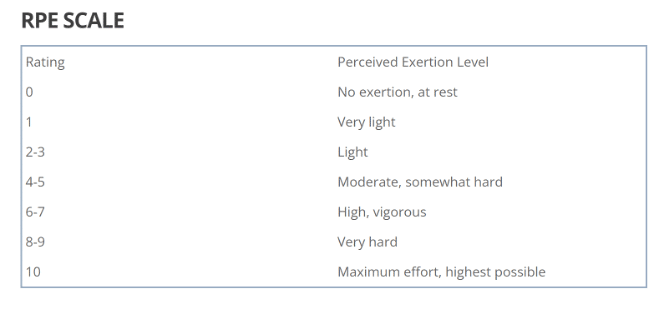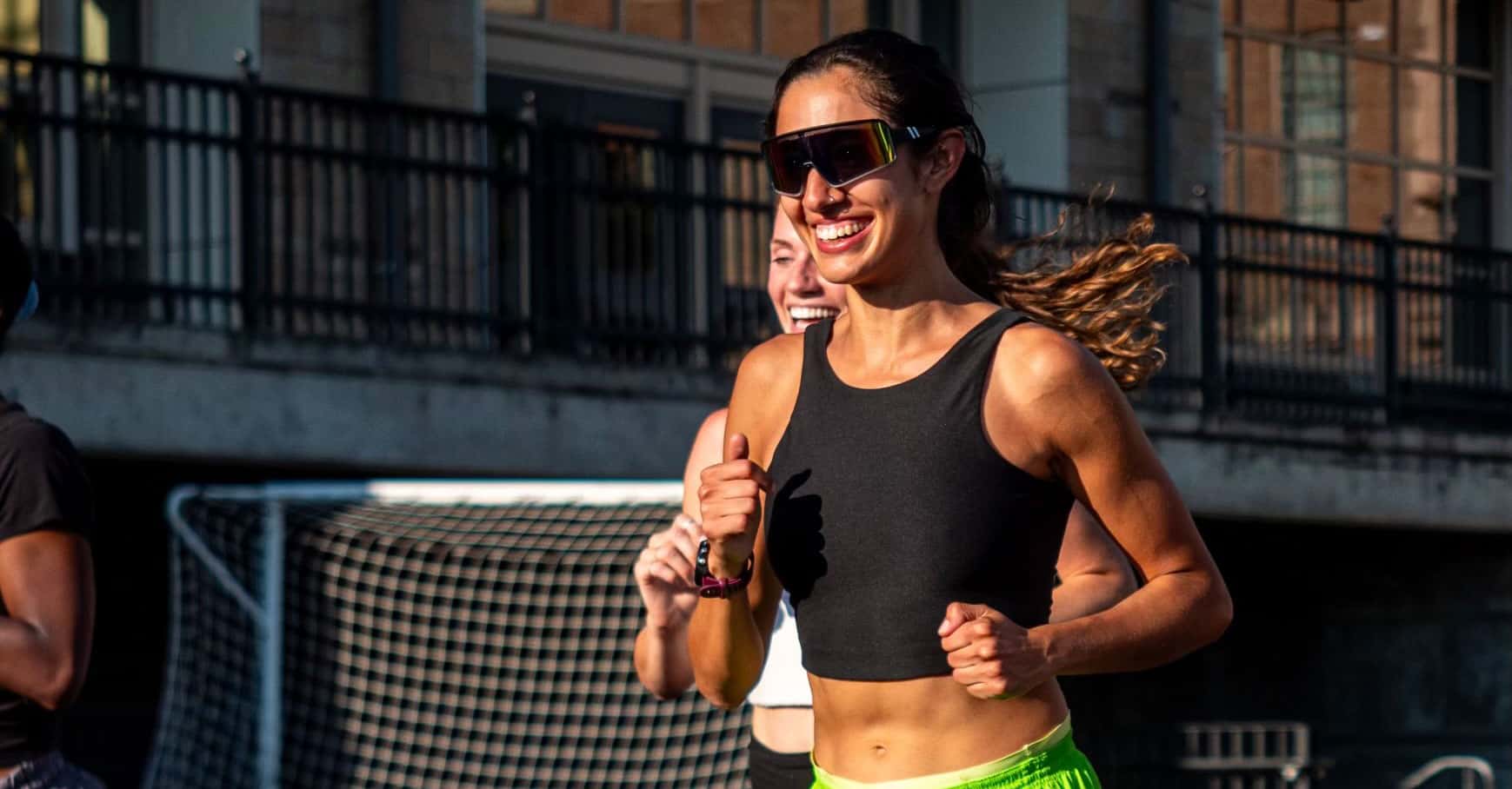
I bet many of you are like me and set some health-related New Year’s resolutions this year. My goal for this year is to run the Pittsburgh marathon (Hail to Pitt!). Personally, I love long, slow runs, but I needed to incorporate speed work to achieve the marathon time I wanted. I started Emerald City Run Club dedicated to pushing boundaries through grueling (but fun!) HIIT workouts like hill sprints, track drills, and stair climbs. Having others join me in my run helps hold me accountable to my training.
Now, a year into doing speed and HIIT work through my run club once a week, my VO2 max has increased, and slow, long runs feel easier! It’s not just me who feels better. My co-captain at Emerald City Run Club, Will Pannetier said,“Speed work has helped me progress into faster paces and lower heart rate at slower paces. I love the sense of community and pushing myself physically with new and old friends.”
If this is something you are intrigued about let me tell you more…
What is HIIT?
High intensity interval training is a vigorous form of exercise. It is a mix of zone 3-5 cardio followed by periods of recovery. It should be intense enough where you feel a burn in your muscles and you are out of breath. It involves short blasts of exercise, allowing for recovery and repetition.
Benefits of HIIT:
- Increases your VO2 max which increases your life expectancy (more on this later)
- Decreases depression by cleaning up neurotoxins in muscles that are linked with depression.
- Lowers risk of type 2 diabetes: exercise causes build up of lactate which stimulates glucose to move into muscle, lowering blood glucose levels.
- Reverse aging of the heart1
What are the different zones of cardio and what do they mean?
Zones of cardio are defined by several things: how hard your heart is working, how you feel during physical activity aka rate of perceived exertion (RPE), and whether you are in an aerobic or anaerobic state (oxygen consumption).
If you are new to HIIT, this is a reminder to see your primary care doctor to ensure that you can safely work out near your max heart rate. Once you have clearance, you can determine your Max HR with this simple formula:
Max HR = 220- age
Zone 1 aka Easy Cardio: This is minimal exertion; warm up and cool down paces.. You will feel like you can go forever. It is equivalent to about 50-60% maximum rate (HR) and a RPE of 1-3 (refer to the chart below)
Zone 2 aka Aerobic Zone: This will feel like you can still carry a conversation and breathe through your nose. This is equivalent to 60-80% HR max and an RPE of 4-5.
Zone 3 aka Max Aerobic: This is where you may feel a burning feeling in your legs, fatigue in your lungs, and difficulty maintaining a conversation if you have a workout buddy. Lactate is produced in this zone. This is equivalent to 80-85% HR max, and an RPE of 6-7.
Zone 4 aka Anaerobic Threshold: This is not sustainable to stay in this zone. Most people can only maintain this for a few minutes max. It is 85-95% HR max and an RPE of 8-9.
Zone 5 aka GO TIME: This is an all out exertion; short intervals that are hard to maintain for 1 minute. Greater than 95% HR max and an RPE of 10.

What is VO2 max and why does it matter?
VO2 Max is a measure of maximal oxygen uptake, which allows you to use oxygen during exercise. It is the best marker to measure cardiovascular fitness and is associated with increased lifespan.2
VO2 max is most accurately tested in a clinic, luckily you can get VO2 max testing among other high grade tests, done at DexaFit Seattle, which is walking distance from Avant Physical Therapy. Many smart watches also will calculate your VO2 max estimated based on your age, resting heart rate, gender, and stats on current exercise; however, since it does not track your oxygen consumption it lacks accuracy. A test done on the Garmin Forerunner 245 showed an average overall discrepancy (error) of 5.7%3.
How do I incorporate this into my exercise plan:
- Check with your doctor to make sure HIIT exercise is appropriate for you.
- If you are in physical therapy, check with your physical therapist (PT) and make sure your body is ready for the demands of running.
- If so, 150-200 minutes of zone 2 cardio a week for aerobic health is recommended.4
- 1 day/week of HIIT4
Ready to get started??
Every runner will benefit from a Performance and Wellness exam. We are excited to provide this resource at Avant Physical Therapy where you will learn about any mobility or strength deficits and undergo a full video gait analysis of your running. Your therapist will give you appropriate exercises and coaching to optimize your run. Once you have clearance to begin a HIIT program, I’d love you to join us at Emerald City Run Club. This club was started by me, Giovanna Florencia, and is meant for all levels of running experience. In the winter months we only do track workouts. In the spring/summer,when the sun doesn’t set so early, we rotate through track, stair, and hill workouts. We meet Thursdays at 6:30pm at the Roosevelt High School track and it lasts less than an hour.
Follow the club on Instagram at @Emeraldcityrunclub and email emeraldcityrunclub@gmail.com expressing your interest in joining so you can be added to the email list.
If you are injured and want to get back to running, or want to be screened for running readiness, schedule an appointment at Avant Physical Therapy and mention your specific needs.
References:
- Howden EJ, Sarma S, Lawley JS, Opondo M, Cornwell W, Stoller D, Urey MA, Adams-Huet B, Levine BD. Reversing the Cardiac Effects of Sedentary Aging in Middle Age—A Randomized Controlled Trial: Implications For Heart Failure Prevention. Circulation. 2018;137:1549–1560. Published January 8, 2018. doi:10.1161/CIRCULATIONAHA.117.030617
- Mandsager K, Harb S, Cremer P, Phelan D, Nissen SE, Jaber W. Association of Cardiorespiratory Fitness With Long-term Mortality Among Adults Undergoing Exercise Treadmill Testing. JAMA Netw Open. 2018;1(6):e183605. doi:10.1001/jamanetworkopen.2018.3605
- Düking P, Van Hooren B, Sperlich B. Assessment of Peak Oxygen Uptake with a Smartwatch and its Usefulness for Training of Runners. Int J Sports Med. 2022 Jun;43(7):642-647. doi: 10.1055/a-1686-9068. Epub 2022 Jan 30. PMID: 35094376; PMCID: PMC9286863.
- American College of Sports Medicine. “Physical Activity Guidelines Resources.” ACSM, 2022, www.acsm.org/education-resources/trending-topics-resources/physical-activity-guidelines.
Author:
Giovanna Florencia Padilla, PT DPT
Contributors:
Laura Bannister, PT, DPT, OCS, OMT


